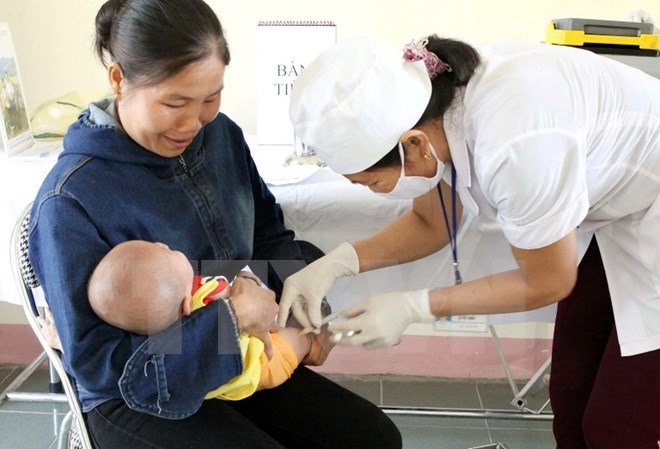

The health sector has called for more financial resources and efforts in the fight against hepatitis in Việt Nam and the world.
 |
| A newborn gets vaccine at a medical station.The World Health Organisation said that an estimated 8.7 million people in Việt Nam are living with chronic hepatitis B and 1 million others are living with chronic hepatitis C. — VNA/VNS Photo Dương Ngọc |
HÀ NỘI — The health sector has called for more financial resources and efforts in the fight against hepatitis in Việt Nam and the world.
A meeting was held Friday in Hà Nội to mark World Hepatitis Day on July 28.
“Việt Nam is one of three countries in the Western Pacific with the highest number of people suffering from chronic hepatitis B and C. Chronic hepatitis B infection is the main cause of liver disease, such as cirrhosis and liver cancer, in Việt Nam,” Deputy Minister of Health Nguyễn Viết Tiến said at the event.
“Although recently, the infection rate has witnessed a declining trend, the disease has still placed a heavy burden on capacities and resources of Việt Nam’s health system,” Tiến said.
“To minimise new infection cases, preventive measures should be expanded with a focus on the increase of Hepatitis B immunisation rate and blood transfusion quality, especially increasing the vaccination rate of newborns within 24 hours after birth,” the deputy minister of health said.
Tiến said the health sector was working with relevant sectors to expand intervention measures against hepatitis B and C and develop policies to minimise treatment expenses for patients with chronic hepatitis B and C.
Tiến said the treatment not only aimed to cure patients, but also prevent hepatitis B and C from spreading in the community. Hepatitis B can be prevented with the currently available safe and effective vaccine, while 90 per cent of hepatitis C patients can be cured thanks to the advent of new directly acting antivirals (DAAs).
On the occasion, the health ministry urged the Vietnamese to protect themselves and their families by bringing children to medical stations to get hepatitis B and C vaccinations. People at a risk of hepatitis should visit hospitals for tests and early treatment. Hospitals and doctors are required to ensure that patients are provided with safe services during examination and treatment, he added.
The World Health Organisation (WHO) said an estimated 8.7 million people in Việt Nam are living with chronic hepatitis B and one million others are living with chronic hepatitis C, and require treatment. An estimated 8.8 per cent of women and 12.3 per cent of men are chronically infected with hepatitis B.
According to latest WHO data from the Global Hepatitis Report released in April 2017, an estimated 325 million people worldwide are living with chronic hepatitis B or hepatitis C virus infection. Of these, 129 million (40 per cent) are living in the Western Pacific Region (115 million with hepatitis B and 14 million with hepatitis C). The 2017 report also indicates that the large majority of these people lack access to life-saving tests and treatment. As a result, millions of people are at risk of progression towards chronic liver disease, cancer and death. — VNS









